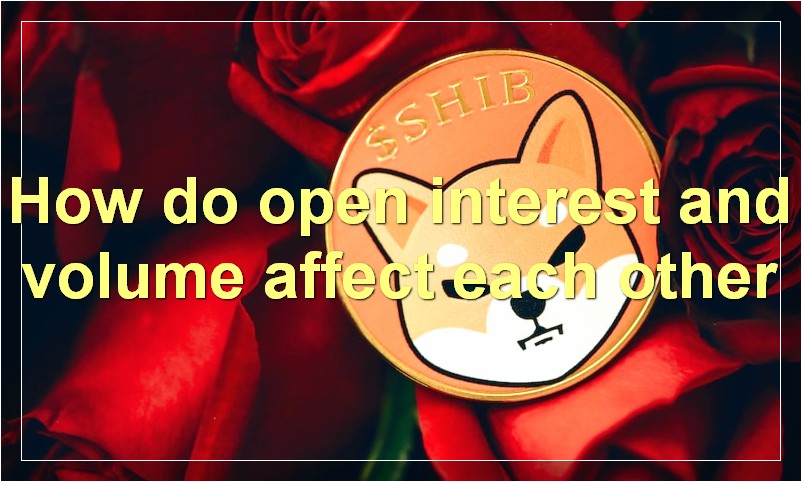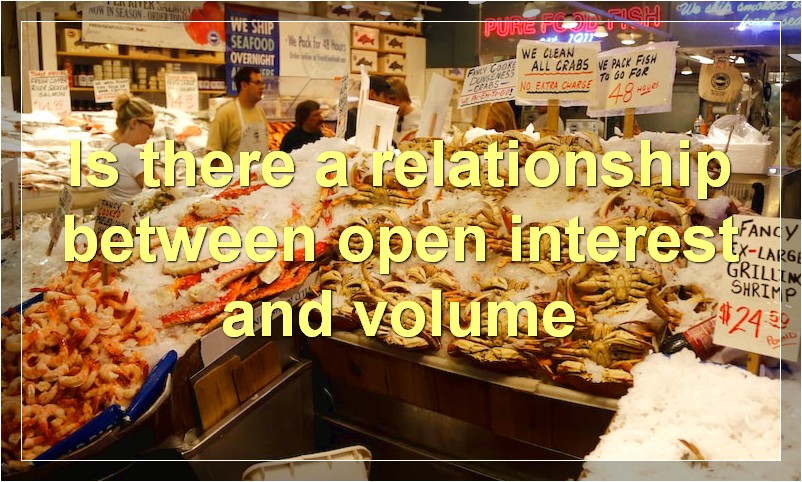Open interest is the number of outstanding contracts that exist for a particular commodity. Volume is the number of contracts traded during a particular time period. The relationship between open interest and volume is an important one because it can provide clues about the future direction of prices.
What is the difference between open interest and volume
When it comes to tracking activity in the futures market, two key metrics are open interest and volume. But what exactly is the difference between the two?
Open interest represents the total number of open contracts for a given futures market. This is important because it gives you an idea of how much money is actually flowing into a particular market. For example, if there’s high open interest in the crude oil market, that means there’s a lot of money being invested in that market.
Volume, on the other hand, measures the total number of contracts traded during a given period of time. This is important because it gives you an idea of how active a market is. For example, if there’s high volume in the crude oil market, that means there’s a lot of trading activity taking place and prices are likely to be volatile.
So, to sum it up, open interest represents the total amount of money flowing into a market, while volume represents the total number of contracts traded.
How do open interest and volume affect each other

Open interest and volume are two important aspects of trading that can have a big impact on each other. Open interest is the number of contracts that are outstanding for a particular asset, and volume is the number of contracts that are traded in a day. When open interest is high, it means that there are more contracts out there that need to be traded, and this can lead to higher volume. On the other hand, when open interest is low, there are fewer contracts out there that need to be traded, and this can lead to lower volume.
What are the benefits of monitoring open interest and volume
Open interest is the number of outstanding contracts that are held by traders at the end of the day. It is a good indicator of market activity and liquidity.
Volume is the number of contracts traded during the day. It is a good indicator of market activity and liquidity.
Monitoring open interest and volume can give you an idea of how active the market is and whether there is enough liquidity to trade.
Does high open interest always mean high volume
Open interest refers to the number of outstanding contracts that are held by traders at the end of the day. Volume, on the other hand, is the number of contracts traded during the day. Thus, high open interest means that there are a lot of contracts waiting to be traded, while high volume means that there was a lot of trading activity during the day.
Does low open interest always mean low volume
Open interest represents the number of outstanding contracts that are held by traders at the end of the trading day. Low open interest can be an indication of low volume, but not always. It is possible for there to be high volume with low open interest, or vice versa.
Is there a relationship between open interest and volume

When it comes to trading, there are a lot of different factors that can affect the market. One of the things that traders often look at is the relationship between open interest and volume.
Open interest is the number of contracts that are outstanding in a particular market. Volume, on the other hand, is the number of contracts that are traded during a particular period of time.
Some traders believe that there is a relationship between open interest and volume. They believe that if there is high volume, it means that there is a lot of interest in the market. However, if there is low volume, it could mean that there is less interest in the market.
However, it is important to keep in mind that just because there is high volume, it does not necessarily mean that the market is going to move in a certain direction. And just because there is low volume, it does not mean that the market is not going to move at all.
There are a lot of different factors that can affect the market and it is important to consider all of them before making any decisions.
What happens when open interest decreases
When open interest decreases, it usually means that there are fewer traders interested in the market. This can lead to lower prices and less activity.
What happens when volume decreases
As the volume decreases, the particles of the substance begin to vibrate more slowly. The energy of the system also decreases as the motion of the particles becomes more restricted. Eventually, the particles will stop moving altogether and the temperature of the system will reach absolute zero.
What is the difference between open interest and traded volume
Open interest is the number of contracts that have been traded but not yet closed. Traded volume is the number of contracts that have been traded during a specified time period.
What is the significance of open interest
The open interest is the number of contracts that are held by traders that have not yet been closed. It is a measure of market activity and liquidity, as well as the level of commitment by traders. A high open interest indicates a strong market, with plenty of participants and liquidity. A low open interest indicates a weak market, with few participants and little liquidity.

